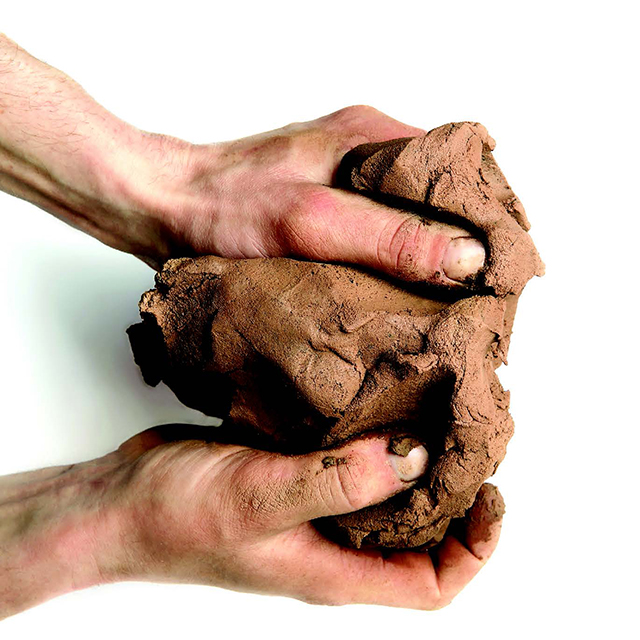Preserving and restoring ecosystems and biodiversity
Ceramic Roadmap
TO 2050
The production of ceramics in Europe relies on raw materials, principally clay, that are extracted in quarries in Europe and beyond.
Quarrying operations always have an impact on the environment. The European ceramic industry is committed to ensuring that the impact is limited, and that sites are rehabilitated. Careful planning, good stewardship and active rehabilitation minimise the negative environmental impact of our quarries and help biodiversity to thrive. Each quarry is carefully planned, and impact assessment studies are performed to map potential effects on local flora and fauna, noise pollution and dust levels.
Clay quarries do have an impact on the local environment but they do not require any chemicals, nor do they use explosives. Furthermore, the unique landscape, especially aquatic environments, created by quarrying operations can have a positive impact on habitats and wildlife in and around these quarries.
The European ceramic industry supports the European Union’s Green Infrastructure objectives and focuses on promoting biodiversity so that ecosystems can deliver their many benefits to people and nature.
Principally, this means creating wildlife habitats on quarry sites, aimed at the conservation of endangered or threatened species and restoring species populations. Quarrying, as an extractive industry, creates holes and spaces that can then be filled with water to provide environments in which aquatic flora and fauna can flourish.
Through this approach, operational and rehabilitated clay quarries have become havens for wildlife, demonstrating that restoration of quarries can strengthen ecosystems, benefiting local biodiversity. Databases are being set up to document the biodiversity in used and restored pits; this is notably the case in Germany. Several European quarries have also been transformed into sites for the production of solar energy.
Transparency
Many sites host open days, inviting the local community to visit quarries and learn more about how careful management can benefit local wildlife and biodiversity. All biodiversity is also diligently logged in a series of databases that allow for a data-driven approach to measure impact and progress.
Partnerships
Rehabilitation projects are often implemented in partnership with conservation and wildlife organisations, or with academic institutions.
Bridging the gap between science and projects
Bridging the gap between theory and practice is pivotal to promoting biodiversity. A variety of different projects, and a broader assessment of their impact, will help establish best practices and reliable data.
Bricks and Blocks
The use of internal production residues from brickmaking as a substitute for raw materials is common practice across the industry. Broken clay blocks can also be crushed to different sizes and used as a lightweight aggregate for making concrete blocks.
Dry stack systems for facing bricks have also been developed. These are easily dismantled, and the bricks can be reused. Bricks can also be reused when using lime mortar for the brickwork. And brick manufacturers have developed hanging systems in which bricks or brick slips glued on panels are detachably connected to an underlying frame and can easily be reused.
Roof tiles
Roof tiles are easy to disassemble and have a very long service life. They can be reused or recycled for other purposes: backfilling in pits and quarries, water-bound cover layers, aggregates for substructure or surface layer in road construction, coverings for tennis courts and sports fields, vegetation substrate and roofing substrates for green roofs.
Clay pavers
Ceramic pavers are almost always reused, and they even increase in economic value. Clay pavers have a reuse percentage of at least 90% and an average lifespan of 125 years.
Wall and floor tiles
Ceramic wall and floor tiles are increasingly being repurposed, and work is ongoing aimed at achieving zero waste in the manufacture of ceramic tiles by using ceramic waste in the body and glaze. Several manufacturers are also looking at producing tiles that can be reused.
Clay pipes
The minimum share of external recycled content now averages above 20%. In the vitrified clay pipes industry, it is possible to produce 100% recyclable clay pipes, consisting of about 40% secondary raw materials on average, and with a service life of more than 100 years.
Expanded clay
In the expanded clay industry, up to 90% of the product can be reused. Up to 100% of expansion clay additives and 10-15% of virgin clay can be replaced by alternative materials derived from other industry sectors.
Biodiversity in action
Examples of projects aimed at promoting or restoring biodiversity at clay quarries

Leeuwensche Waard
Country: The Netherlands
This joint project between Delgromij and WWF focused on the management of waterways to secure new habitats for local wildlife and to create a 290-hectare nature reserve.

Schlagmann Climate Protection Strategy 2020
Country: Germany
The project has reforested and rehabilitated a range of sites, providing new nesting grounds for birds and bee colonies.

Alsace
Country: France
The ceramic industry joined forces with a local association to develop 15 protected aquatic sites for amphibians.

Noala
Country: Italy
Since 1985, the operators have created a network of ponds to promote biodiversity, integrated into the Natura 2000 network and boasting more than 190 bird species. When the operating licence was renewed in 2009, the protected section was increased from 13 to 36 hectares.


